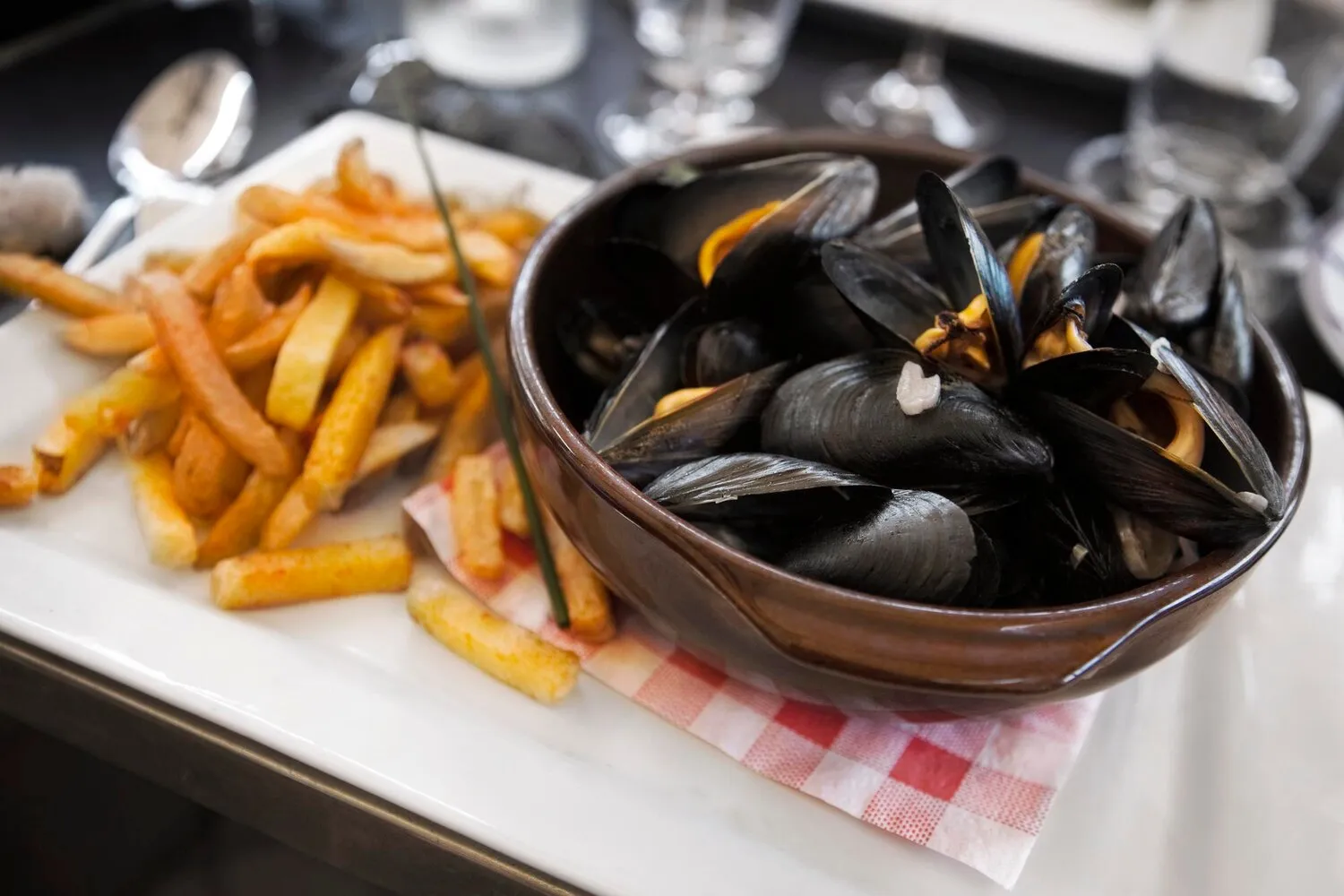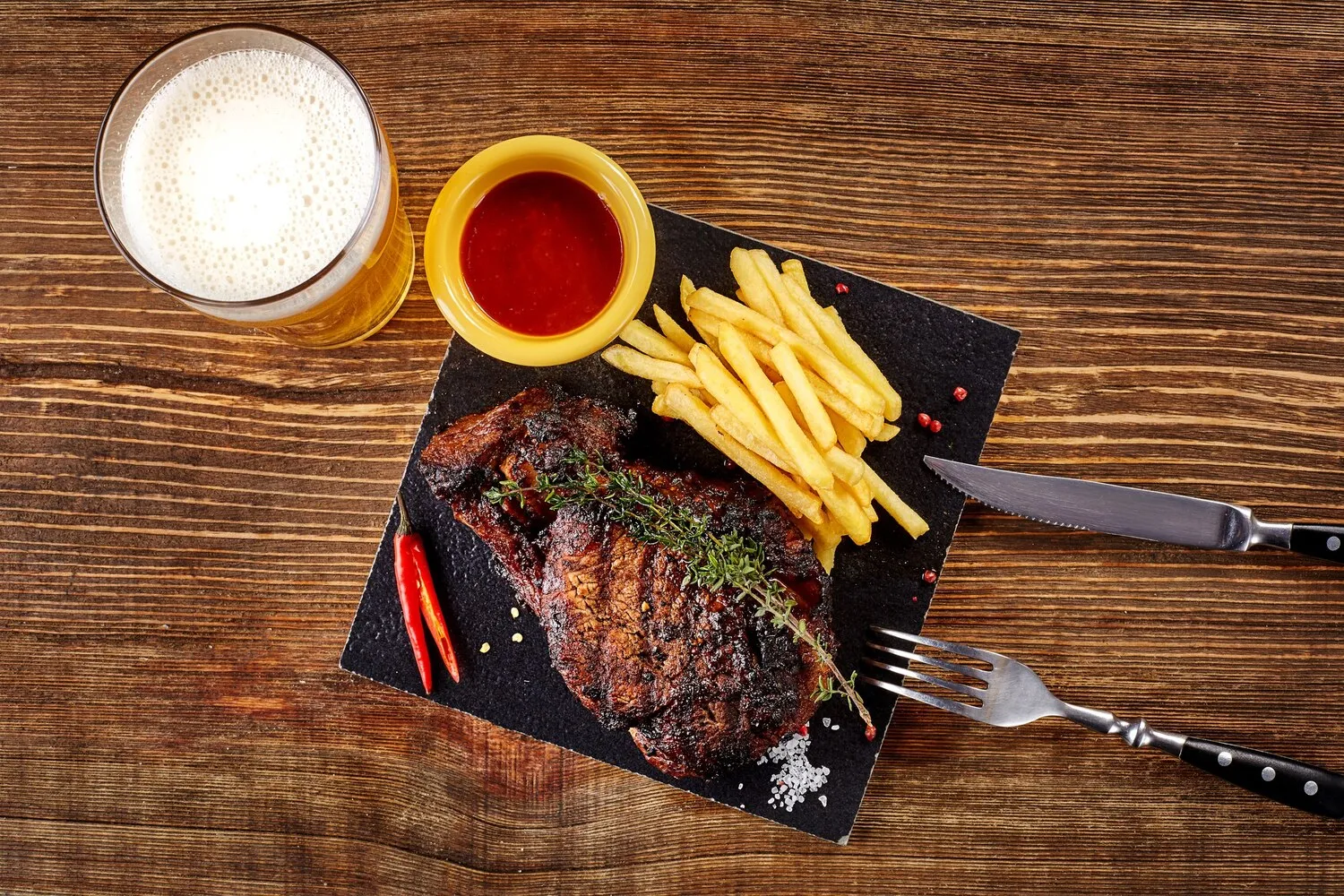
Galettes and Crêpes
Savoury galettes (buckwheat pancakes) and sweet crêpes are a staple in Brittany, and commonly found on La Taverne's menu.
Nutrition Facts
* The % Daily Value (DV) tells you how much a nutrient in a serving of food contributes to a daily diet. 2,000 calories a day is used for general nutrition advice.
Galettes and crêpes have humble origins in Brittany, France. Buckwheat, the main ingredient in galettes, was introduced to the region in the 12th century and thrived in the poor soil. This led to the development of galettes as a staple food for the peasantry. Sweet crêpes, made with wheat flour, emerged later as wheat became more readily available.
Galettes and crêpes are deeply ingrained in Breton culture and are considered a symbol of the region's culinary heritage. They are often enjoyed as a casual meal or snack and are a popular street food.
Crêperies
Crêperies are restaurants dedicated to serving galettes and crêpes. They are a common sight in Brittany and throughout France and offer a wide variety of fillings and preparations.
Cider Pairing
Galettes are traditionally paired with Breton cider, a dry and slightly tart apple cider. The cider complements the savory flavors of the galette and adds a refreshing element to the meal.
Festivals and Celebrations
Crêpes are often associated with Candlemas (La Chandeleur) on February 2nd. Making and eating crêpes is a tradition believed to bring good luck for the year ahead.
The flavors of galettes and crêpes vary widely depending on the fillings. Galettes offer savory and earthy flavors, while crêpes are sweet and delicate.
Galettes, traditionally made with buckwheat flour (blé noir), offer a slightly nutty and earthy flavor. The fillings are typically savory, including ingredients such as ham, cheese (especially Emmental or Gruyère), eggs, mushrooms, and onions. Crêpes, made with wheat flour, are lighter and sweeter. Common fillings include sugar, Nutella, jam, fruit, whipped cream, and even flambéed liqueurs.
Resting the Batter
Allowing the batter to rest for at least 30 minutes, or even longer, helps to relax the gluten and allows for a more tender and even texture.
Using the Right Pan
A thin, non-stick crêpe pan or skillet is essential for making thin and evenly cooked galettes and crêpes. A slightly angled pan helps with easy spreading.
Temperature Control
Maintain a medium heat to avoid burning the galettes or crêpes. Adjust the heat as needed to achieve a golden-brown color without overcooking.
Even Spreading
Use a crêpe spreader or the back of a spoon to evenly spread the batter across the pan. A thin and even layer is key to a perfect galette or crêpe.
Explore additional Brasserie dishes and restaurants
Explore BrasserieDiscover top dining spots and culinary experiences in Rennes.
Explore RennesLearn more about the food culture, restaurant scene, and culinary heritage of France.
Explore France
